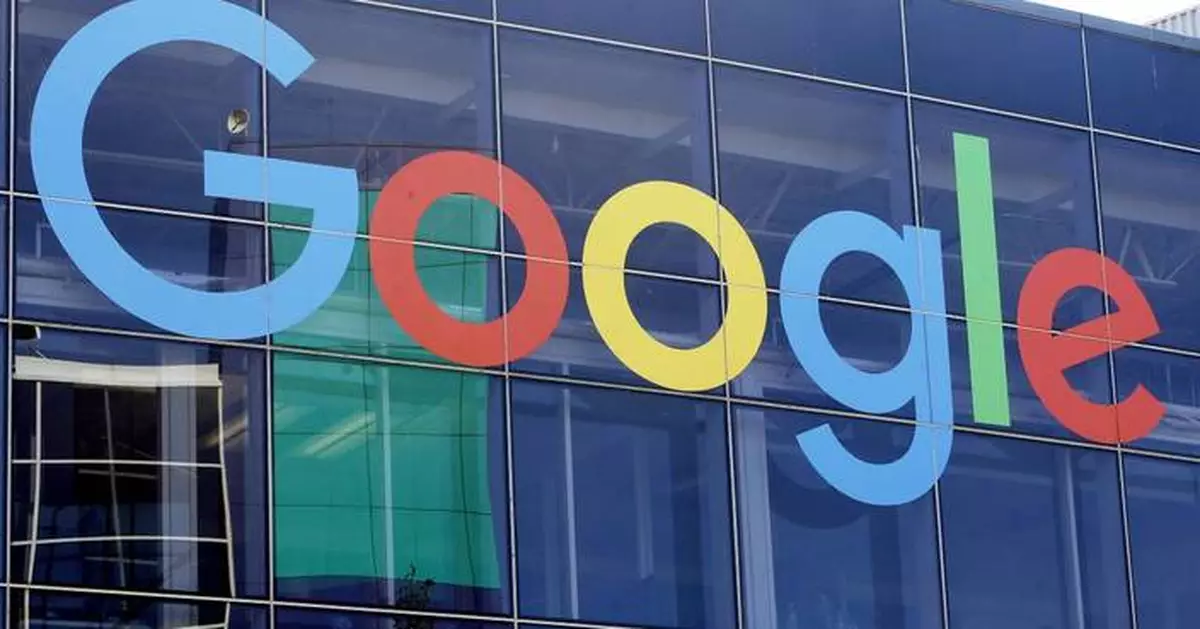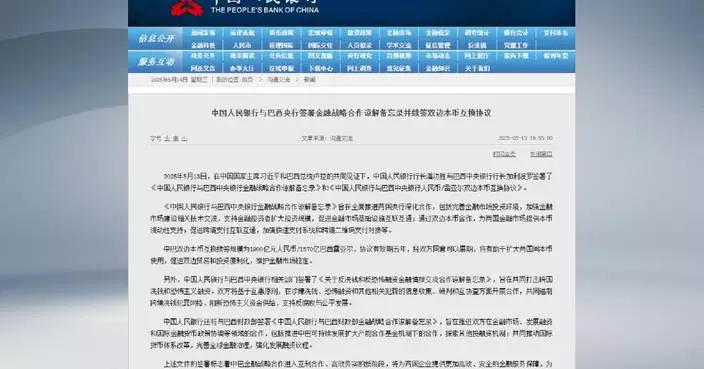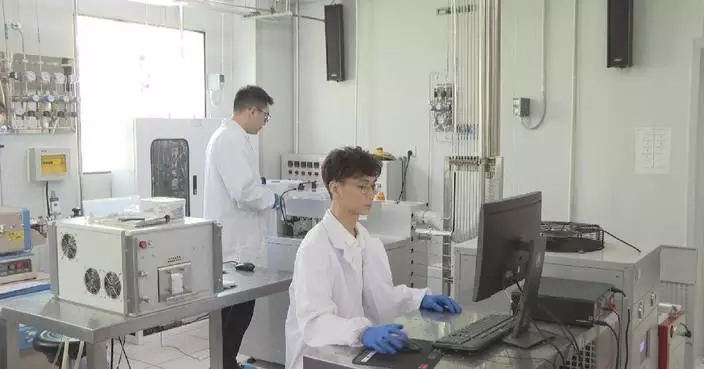Google's profits soared 50% in this year's opening quarter, overcoming the competitive and legal threats that its internet empire is facing amid an economy roiled by a global trade war.
The numbers released Thursday by Google parent Alphabet Inc. indicated the company is rising to the challenge so far, but investors are likely to remain concerned about the turbulent times ahead.
The Mountain View, California, company earned $34.5 billion, or $2.81 per share, during the January-March period, up from $23.7 billion, or $1.89 per share, at the same time last year. Revenue rose 12% from last year to $90.2 billion. The results easily exceeded analysts’ projections, according to FactSet Research.
“We continued to see healthy growth and momentum across the business,” Alphabet CEO Sundar Pichai told analysts Thursday during a conference call.
Alphabet's stock gained more than 4% in extended trading after the numbers came out. The shares had fallen by 16% since the end of last year.
Google’s first-quarter performance illustrated the continuing power of its long-dominant search engine in a sea of uncertainty. While grappling with competitive threats emerging as artificial intelligence reshapes technology, Google is also battling court decisions condemning its search engine and digital ad network as illegal monopolies.
The AI-driven upheaval has opened new opportunities for people to find helpful advice, insights and information through more conversational search options from the likes of OpenAI and Perplexity.
Google's long-dominant search engine is countering the new competition with a feature called AI Overviews that appear above web links in its results. It is also testing a conversational tool called AI Mode that would usher in an even more radical change to its business model.
“The company delivered a sound response to those questioning the solidity of the search business amid ever-increasing AI demand,” Investing.com analyst Thomas Monteiro said.
But Google is trying to keep its business intact as by the U.S. Justice Department attempts to break up the company and impose other restraints after a federal judge last year branded its search engine an illegal monopoly. To make matters worse, its digital ad network also was found to be illegally abusing its power earlier this month in another case brought by the Justice Department.
President Donald Trump’s trade war has injected more uncertainty into the mix by rattling the financial markets amid fears the tariffs will reignite inflation while dragging the economy into a recession. Although Google’s digital services aren’t directly impacted by the tariffs, a recession would likely curtail the spending on ads that generate most of Alphabet’s revenue.
But there were few signs of a slowdown in the past quarter. Google's ad revenue during the period totaled $66.9 billion, an 8% increase from the same time a year ago.
Although Google's executives are mostly upbeat during Thursday's call, they also acknowledged conditions should the trade war trigger a recession.
“We are obviously not immune to the macro environment,” said Philipp Schindler, Alphabet's chief business officer.
The past quarter's steady growth emboldened Alphabet to stand firm on plans to invest $75 billion on AI and other technologies this year while also pursuing approval of a $32 billion deal to buy cybersecurity firm Wiz.
—
This story has been corrected to reflect Alphabet's first-quarter profit increased 50% from the same time last year, or $2.81 per share, and that its revenue for the January-March period totaled $90.2 billion. The story also has been corrected to reflect Google's ad revenue for the first quarter totaled $66.9 billion, an 8% increase from a year ago. An earlier version reported the incorrect dollar amounts and percentage change.
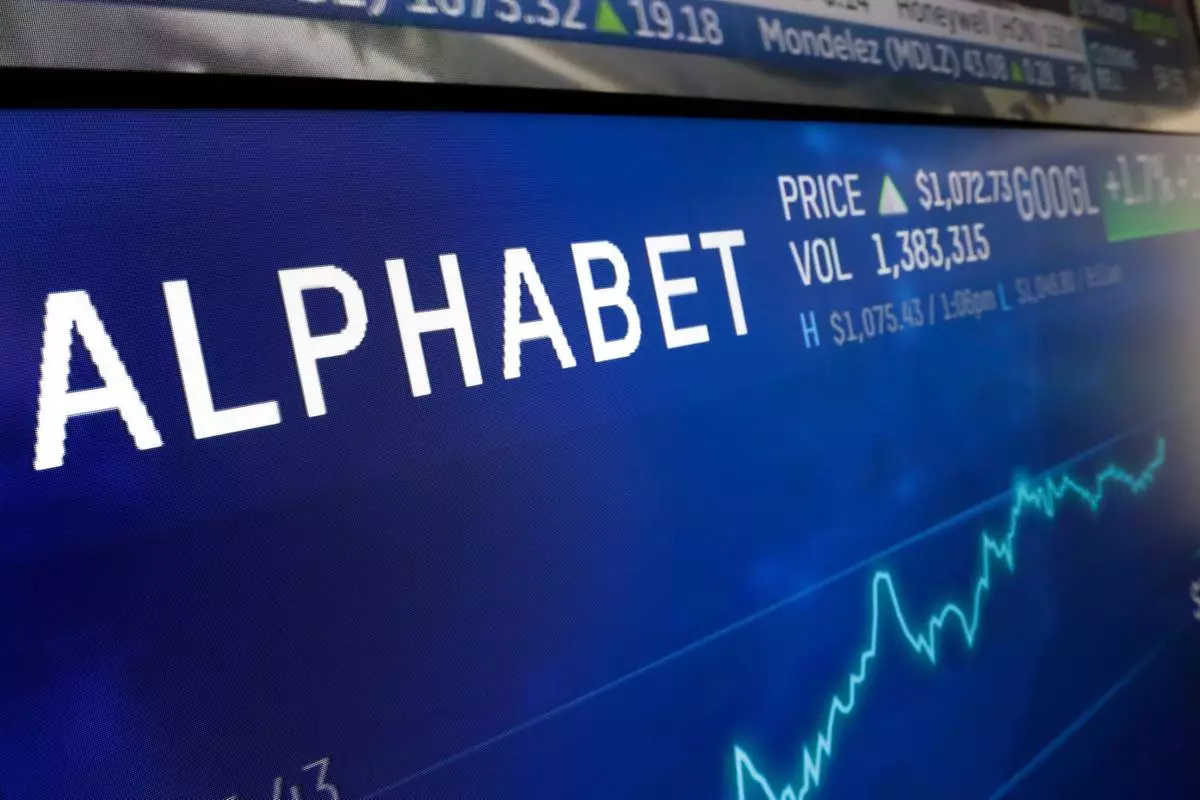
FILE - In this Feb. 14, 2018, file photo the logo for Alphabet appears on a screen at the Nasdaq MarketSite in New York. Alphabet reports earnings on Oct. 24, 2023. (AP Photo/Richard Drew, File)
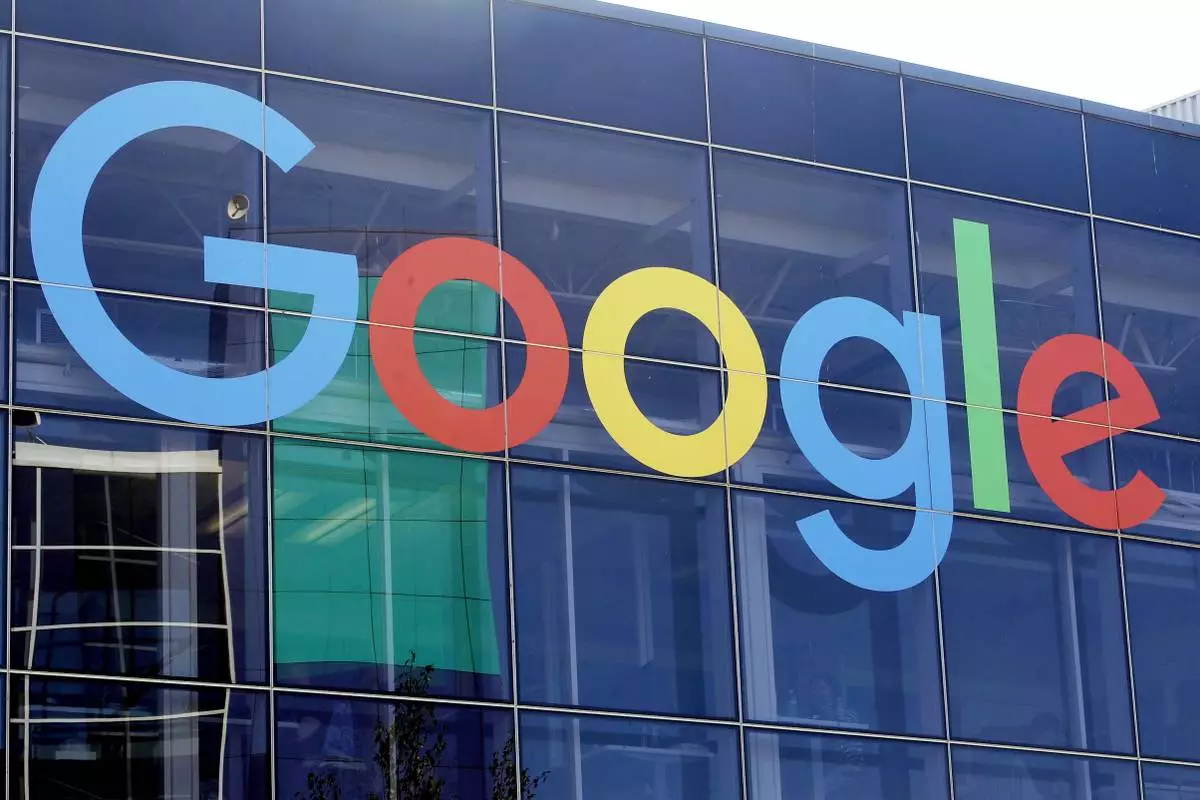
FILE - A sign is displayed on a Google building at their campus in Mountain View, Calif., on Sept. 24, 2019. (AP Photo/Jeff Chiu, File)
A choppy day of trading on Wall Street ended with a mixed finish for stock indexes Wednesday, as gains by several big technology stocks helped temper losses.
The S&P 500 edged up 0.1% after wavering between small gains and losses much of the day. Most of the stocks in the index lost ground, but solid gains for several heavyweight technology companies like Nvidia helped counter a decline in health care and other sectors.
The Dow Jones Industrial Average slipped 0.2%, while the Nasdaq composite rose 0.7%.
Super Micro Computer surged 15.7% after signing a partnership agreement with Saudi Arabian data center company DataVolt. Advanced Micro Devices gained 4.7% after announcing a $6 billion stock buyback program.
Nvidia rose 4.2% and Google parent Alphabet added 3.7%.
Other big gainers included eToro Group, a retail trading platform for stocks and cryptocurrency. It rose 28.8% in its first day of trading.
The market has been relatively steady since its surge on Monday, which came after the U.S. and China entered a 90-day pause in their trade war. The market gained some more ground on Tuesday after the government reported that inflation unexpectedly cooled across the country in April. Additional updates on inflation and retail sales are expected on Thursday.
The benchmark S&P 500 index, which sits at the center many 401(k) accounts, has erased all its losses since President Donald Trump escalated his global trade war in early April. It has now also erased its losses for the year and is back to within 4.1% of its all-time high set in February.
“The stock market’s rally has legs, as the trade negotiation with China was seemingly the toughest one on the docket," said Rick Gardner, chief investment officer at RGA Investments.
Trump has delayed a large swath of his most severe tariffs against America's trading partners, but some import taxes remain in place. Uncertainty over the path ahead continues to hang over businesses and consumers. The on-again-off-again nature of Trump’s trade policy has left companies reluctant to make plans about investment and hiring and consumers nervous about spending.
Businesses continue to trim or withdraw their financial forecasts as they face unpredictable trade policy and cautious consumers.
American Eagle fell 6.4% after the retailer withdrew its financial outlook for the year citing “macro uncertainty.” General Motors, UPS, Kraft Heinz and JetBlue are among the many companies representing a wide range of industries that have warned about the impact of tariffs and a weakening economy.
More than 90% of companies in the S&P 500 have reported earnings for their latest quarter. The majority of companies have reported better-than-expected earnings, but forecasts for earnings growth during the current quarter have been broadly cut in half for companies in the index.
The economy has already showed signs of slowing. It shrank 0.3% during the first quarter amid a surge of imports as businesses and consumers tried to stock up amid tariffs and policy uncertainty.
Inflation remains a big concern. The latest data on consumer prices released Tuesday showed that tariffs haven’t had much impact yet. But that could change as the impact of current tariffs make their way through supply chains and delayed tariffs potentially go into effect. Inflation has cooled to just above the Federal Reserve's target of 2%, but the threat of higher prices on goods because of import taxes has heightened worries about inflation heating up.
The U.S. on Thursday will release its April report for inflation at the wholesale level, which is what companies are paying for goods. Economists expect an easing of inflation there.
The latest update Thursday for retail sales is expected to reflect a sharp drop to 0.2% in April from 1.4% the previous month.
Retail giant Walmart will also report its latest financial results on Thursday and its financial forecasts will be closely watched.
In the bond market, Treasury yields edged higher. The yield on the 10-year Treasury rose to 4.54% from 4.47% late Tuesday. The two-year Treasury yield, which moves more closely with expectations for Fed action, rose to 4.06% from 4.00% late Tuesday.
All told, the S&P 500 rose 6.03 points to 5,892.58. The Dow fell 89.37 points to 42,051.06, and the Nasdaq gained 136.72 points to 19,146.81.
In stock markets abroad, indexes rose in Asia and were mixed in Europe.
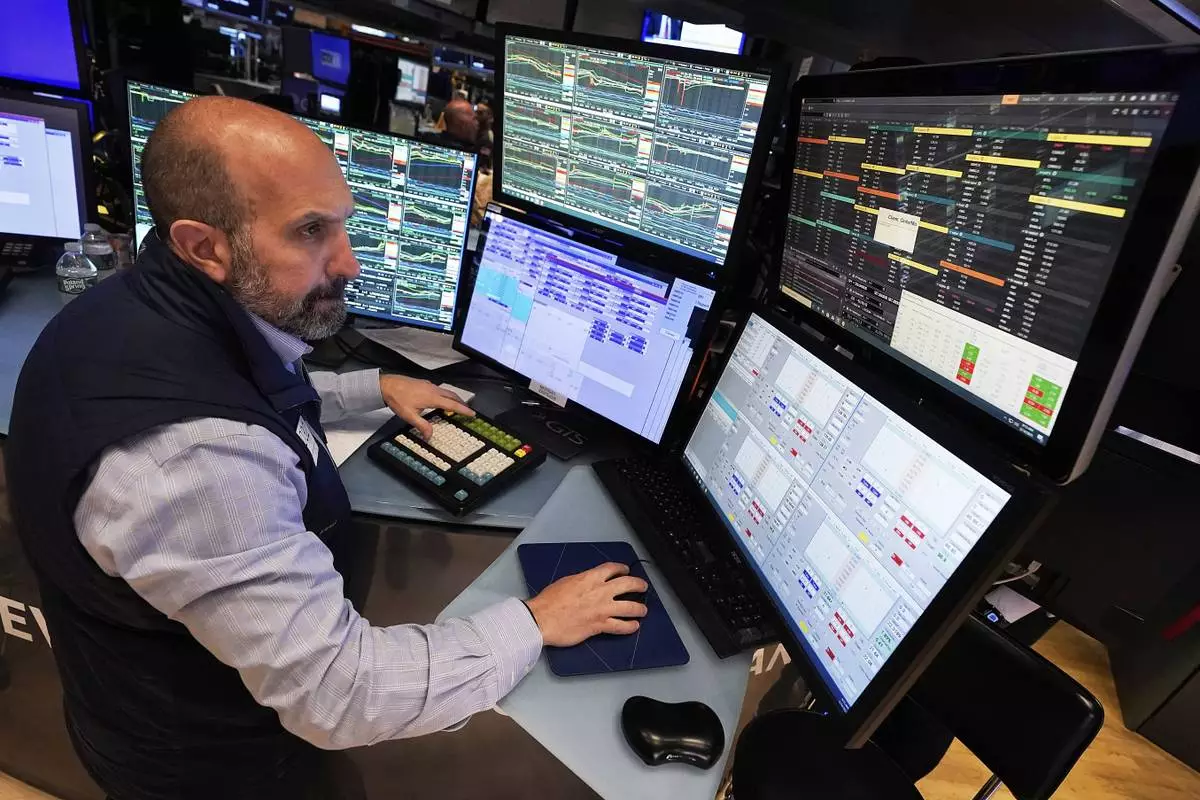
Specialist James Denaro works at his post on the floor of the New York Stock Exchange, Wednesday, May 14, 2025. (AP Photo/Richard Drew)
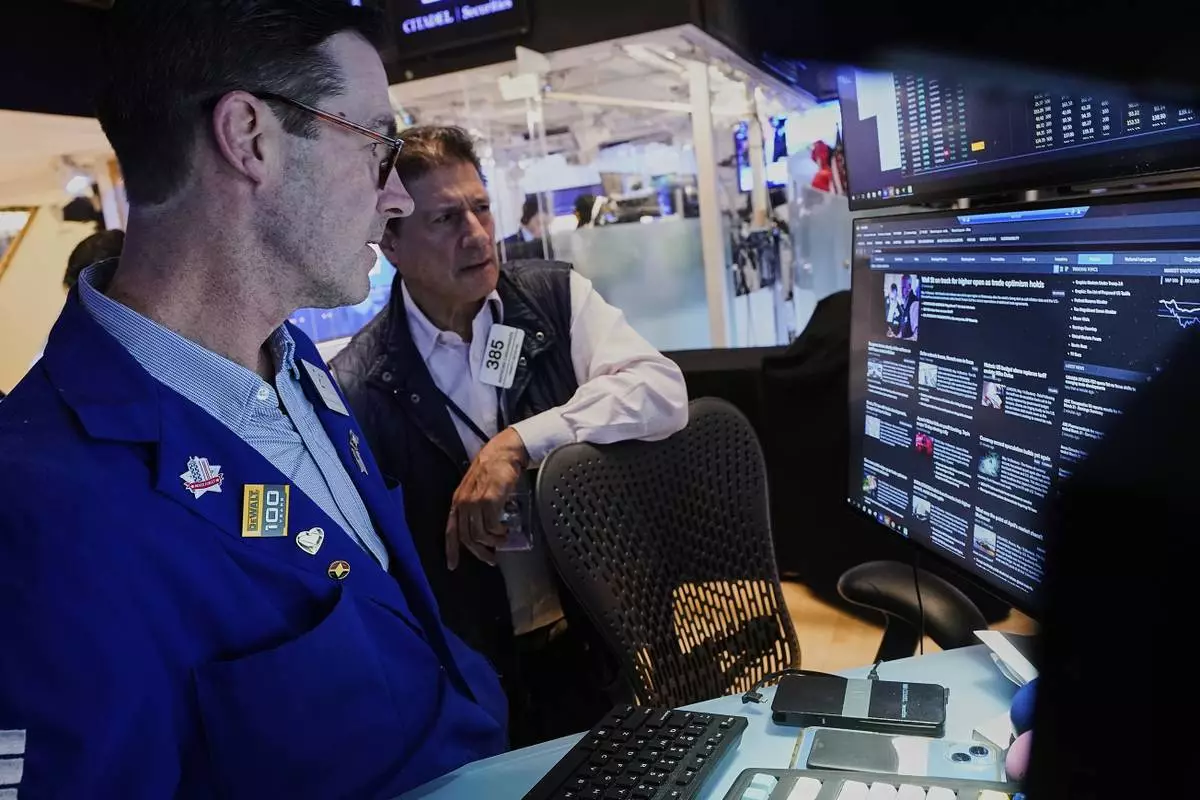
Specialist John McNierney, left, and trader Anthony Carannante work on the floor of the New York Stock Exchange, Wednesday, May 14, 2025. (AP Photo/Richard Drew)
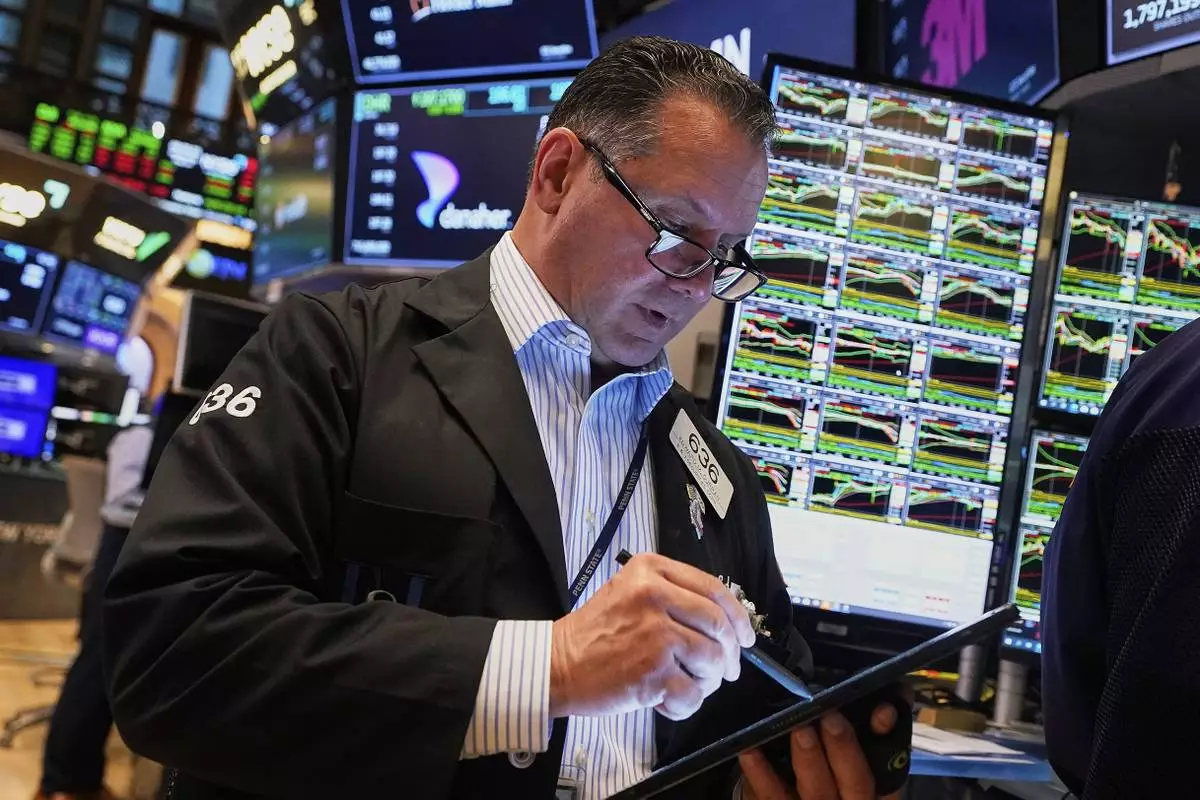
Trader Edward Curran works on the floor of the New York Stock Exchange, Wednesday, May 14, 2025. (AP Photo/Richard Drew)
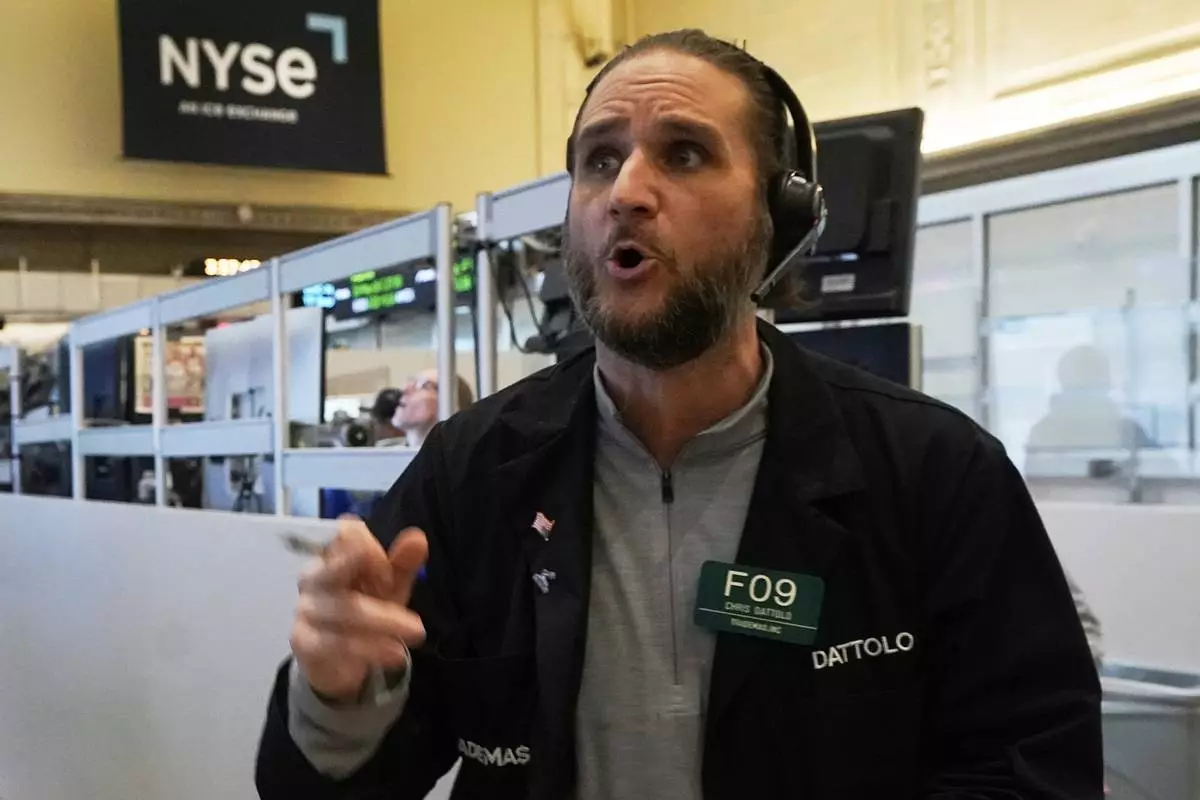
Options trader Chris Dattollo works on the floor of the New York Stock Exchange, Monday, May 12, 2025. (AP Photo/Richard Drew)
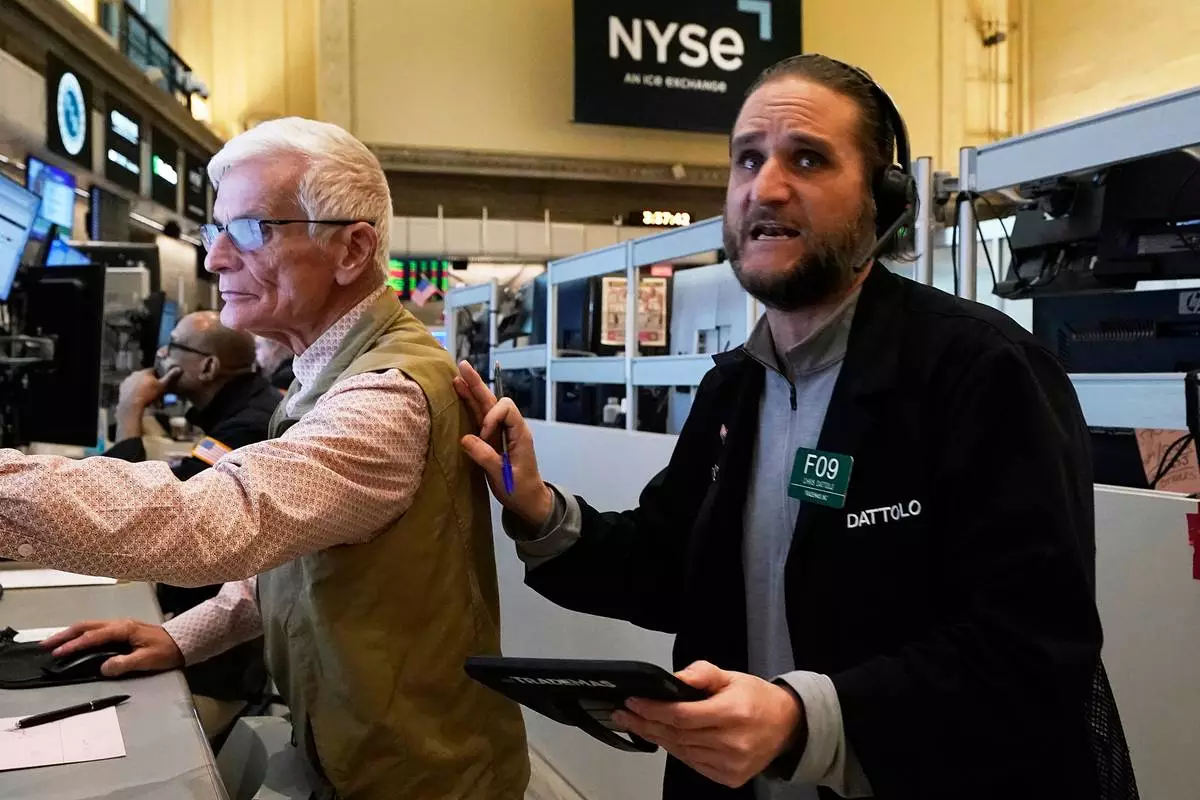
Options trader Chris Dattollo, right, works on the floor of the New York Stock Exchange, Monday, May 12, 2025. (AP Photo/Richard Drew)
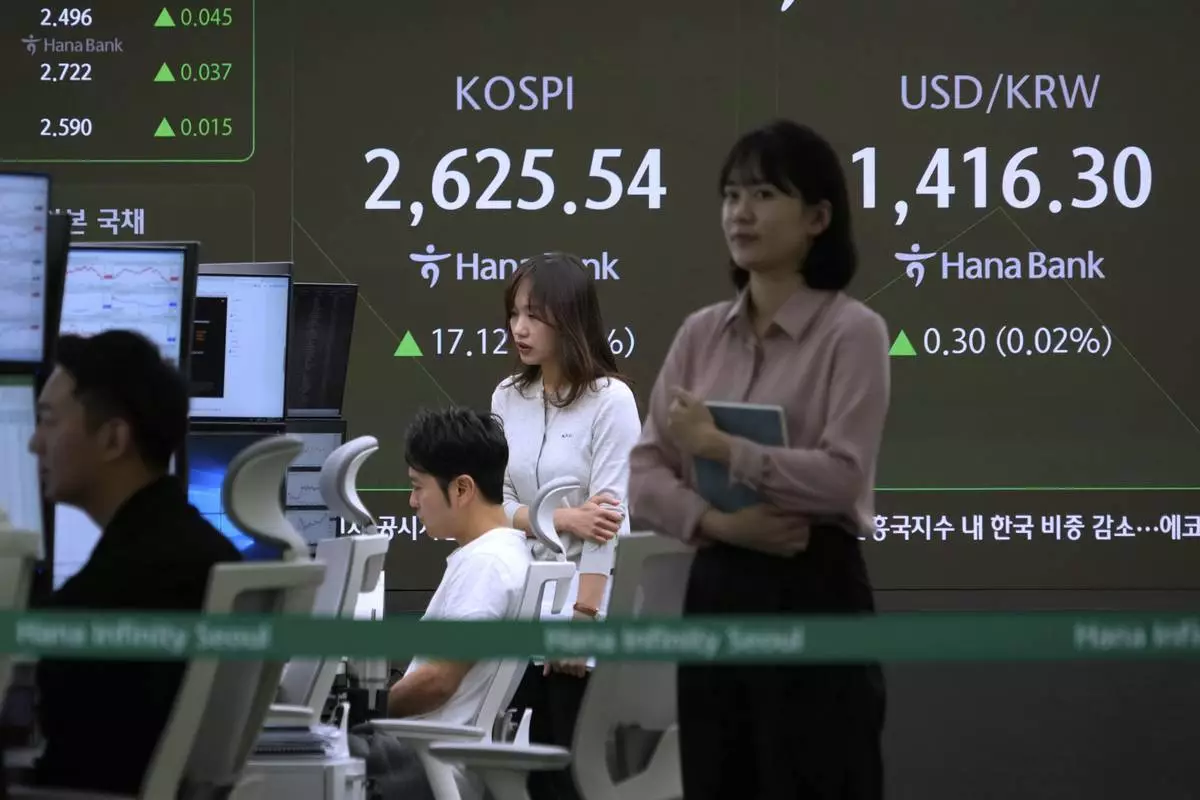
Currency traders work near a screen showing the Korea Composite Stock Price Index (KOSPI) and the foreign exchange rate between U.S. dollar and South Korean won, right, at the foreign exchange dealing room of the KEB Hana Bank headquarters in Seoul, South Korea, Wednesday, May 14, 2025. (AP Photo/Ahn Young-joon)
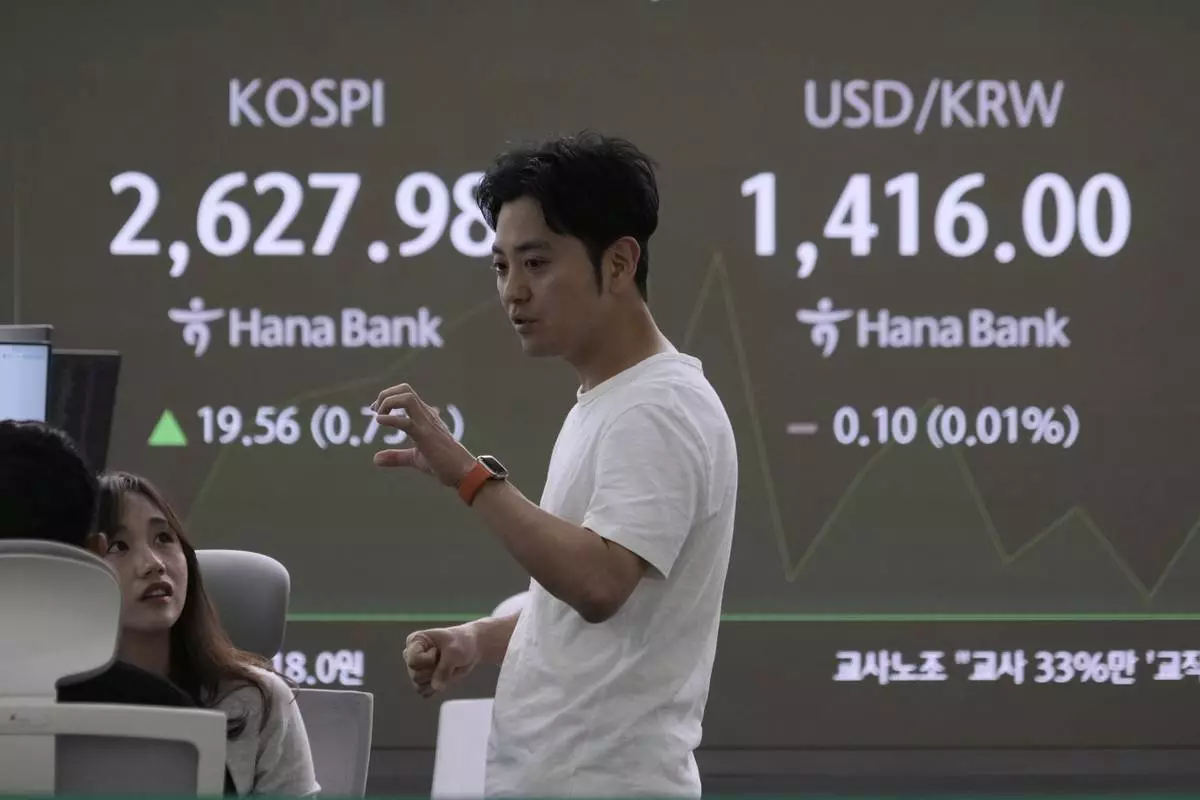
Currency traders work near a screen showing the Korea Composite Stock Price Index (KOSPI), left, and the foreign exchange rate between U.S. dollar and South Korean won at the foreign exchange dealing room of the KEB Hana Bank headquarters in Seoul, South Korea, Wednesday, May 14, 2025. (AP Photo/Ahn Young-joon)
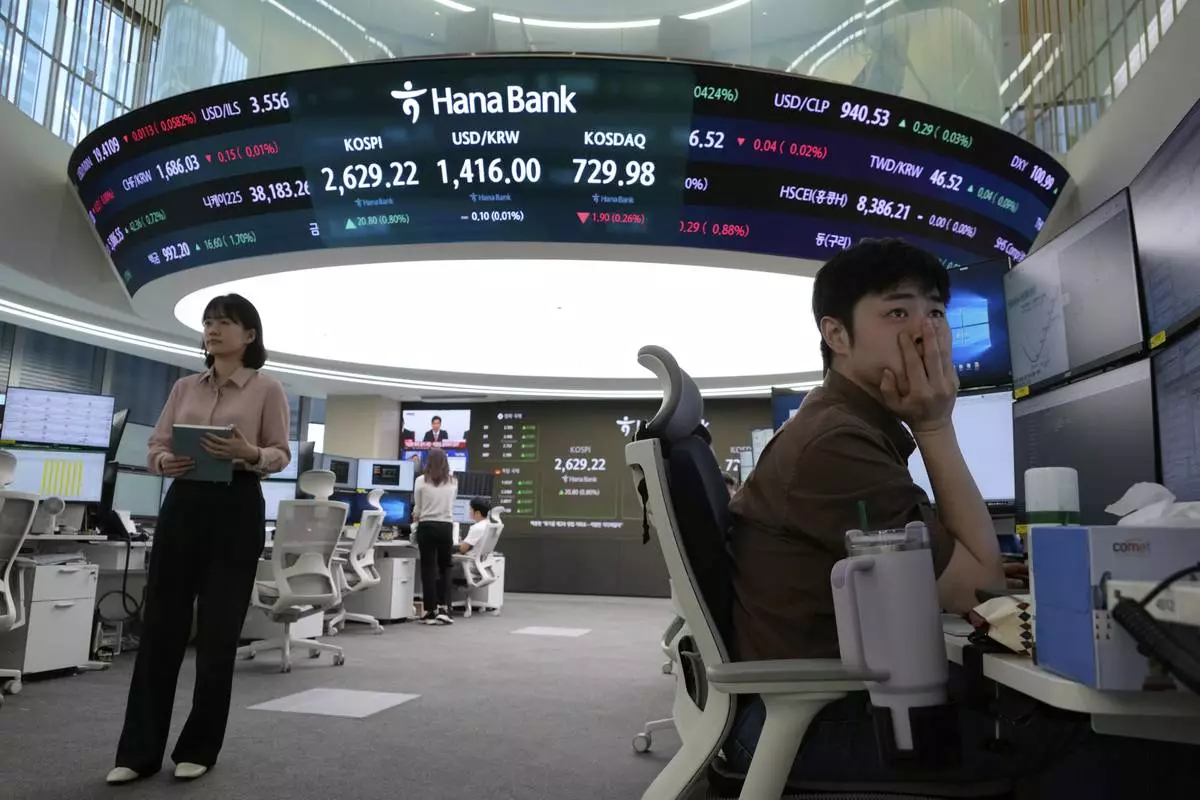
A currency trader watches monitors near a screen showing the Korea Composite Stock Price Index (KOSPI), top center left, and the foreign exchange rate between U.S. dollar and South Korean won, top center, at the foreign exchange dealing room of the KEB Hana Bank headquarters in Seoul, South Korea, Wednesday, May 14, 2025. (AP Photo/Ahn Young-joon)




